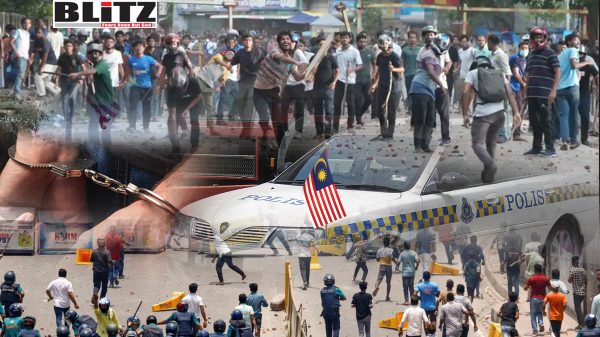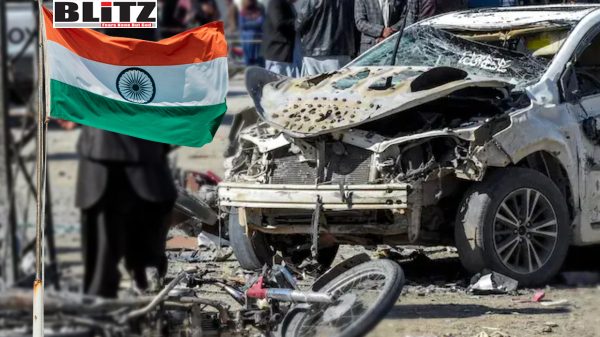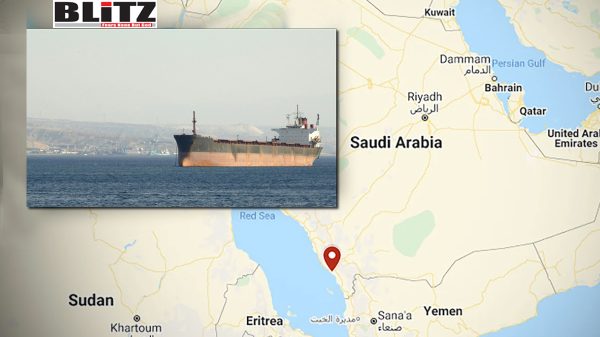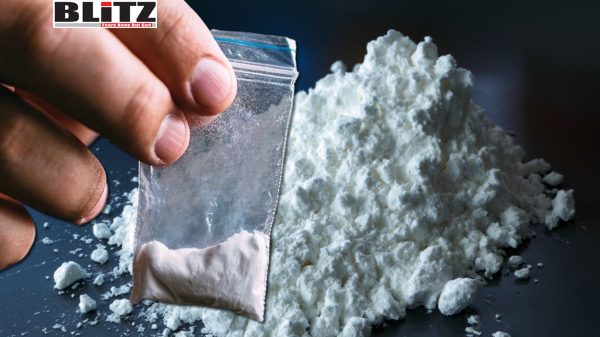Drug cartels show increased interest in narco-submarines
- Update Time : Monday, August 28, 2023

The reappearance of narco-submarines in the headlines earlier this year showcased the ongoing challenges posed by these clandestine vessels. In a notable incident, two secretive crafts were seized: one in the Colombian Pacific containing two tons of cocaine and two bodies, and another found empty in a Spanish estuary along the Atlantic coast.
Contrary to the name, most narco-submarines are not true submarines, as naval expert HI Sutton explains. These vessels, often referred to as Low Profile Vessels (LPVs), are ingeniously designed by Colombian drug traffickers to float close to the water’s surface, evading radar detection.
HI Sutton notes that the narco-submarine phenomenon has reached new heights. The year 2019 saw a significant increase in these vessels, a trend that seems to be continuing in 2020. These purpose-built crafts serve as a primary means for Colombian cartels to smuggle drugs. Their routes vary, stretching from the Pacific towards Central America (en route to the United States), across the Caribbean, and even over the Atlantic to Europe and East Africa.
In 2019 alone, there were over 40 reported incidents involving narco-submarines, compared to just two a decade earlier. This rise is indicative of the enduring efforts of drug trafficking organizations (DTOs), as even heightened interdiction rates have not deterred them.
July 2019: That time when US coast gaurd captured a narco-submarine pic.twitter.com/m6GpGktf1o
— Insane Reality Leaks (@InsaneRealitys) June 29, 2023
A semi-submersible seized by the Colombian navy in March 2020 measured 15 meters (74-foot) fully operational Kevlar-coated submarine in length and carried 2,600 kilograms of cocaine. This vessel was equipped for extensive round trips, with the capacity to carry substantial cargo.
However, while these vessels are dubbed narco-submarines, experts point out that the real submarines – known as “Super Submarines”- are nearly impossible to detect.
Some of these Fully Submersible Vessels (FSVs) operate with a snorkel tube supplying air to the diesel engine. They come equipped with a conning tower, periscope, and even air conditioning. An example of this is the Kevlar-coated “super sub” discovered near the Ecuador-Colombia border in 2010.
Colombian navy seizes 'narco-submarine' destined for drug trafficking during raid#NarcoSubmarine #Colombia pic.twitter.com/sHHynY2DhO
— Ruptly (@Ruptly) August 2, 2021
The roots of narco-submarines trace back to at least the 1990s. However, their prevalence has increased over time. Early iterations were so rare that US Drug Enforcement Agencies (DEA) nicknamed them “Bigfoot”. Pablo Escobar and members of the Cali Cartel were among the first to use narco-submarines for transporting cocaine to the United States and other destinations.
Despite the dramatic captures of narco-submarines at sea, most voyages go undetected. Their construction takes place in remote jungle areas, often near rivers in mangrove swamps on Colombia’s Pacific Coast. These vessels are then floated out to sea at night for loading with cocaine.
Local fishermen, paid significant sums, navigate the narco-submarines to Central American countries where the drugs can be more easily transported overland. If intercepted, the crew sometimes sinks the boat by opening valves, eliminating evidence. However, captured crew members find themselves shackled in the holds of US Coast Guard ships—nicknamed “Floating Guantanamos”.
Despite interdictions and captures, the profitability of cocaine makes these vessels expendable. Narco-subs, varying in design from sophisticated to rudimentary, are often designed for one-time use, delivering cargo to awaiting boats near the destination country before being scuttled in deep water.
Wired magazine’s Jim Popkin told NPR “It can ride underwater for 18 hours at a clip. It had the capacity to haul up to nine million tons of cocaine, and, coated with Kevlar and carbon fiber it is difficult to track. Like an World War-II sub, when it goes under, you can barely hear it…. The cartels are willing to spend that kind of time and money, because at the end of the day, you can ship US$250 million dollars’ worth of cocaine to … Mexico, for transport into the US”.
In 2020 an electric narco-sub with ten tons of batteries and room for six tons of cocaine was confiscated in Timbiquí, Cauca. But the most headline-grabbing narc submarine – and a proper big one at 46 meters – was found surprisingly far from the sea. Back in 2000, a police raid in Facatativá, a town close to Bogotá, discovered the steel sub.
It was being built in a nondescript warehouse with help from Russian technicians. If ever launched it could have dived to 100 meters and carried 200 tons of cocaine a distance of 2,500 kilometers.
Why submarines are built in Bogotá?
A city like Bogotá, which is two and a half kilometers above sea level is not the obvious place to build a sea-going vessel. Unfortunately, no-one was around to explain this choice of location: the workers and Russian-speaking technicians scarpered before the police raid, leaving the half-finished sub.
One theory is that the double-skin steel hull, which would have been worth an estimated USD$10 million when complete, was destined to travel by road in three sections that could be bolted together somewhere by the coast.
A Russian link was later confirmed by revelations by Spanish smuggler Laureano Oubiña whose tell-all book recounted how former Soviet navy personnel brought technical expertise to narco-sub business in South America after the collapse of the Soviet Union.
In fact, narco-submarines are nothing new. In fact, they have been around in some form since at least the 1990s, though the early ones were so rare that US drug enforcement agencies nicknamed them ‘Bigfoot’. Pablo Escobar as well as members of the Cali Cartel were using narco-submarines in transporting cocaine to the United States and few other destinations. The first vessel captured by US Coastguards in 2006 – codename Bigfoot Two – intensified a maritime game of cat-and-mouse that has since spread to Europe.
Long thin LPVs with fast outboard motors tend to cover the Pacific route from Colombia to Central America. Caribbean routes are also used; in 2017 a narco-sub was captured off Texas.
Stubbier craft powered by diesel engines ply the route from Brazil to Europe, although some cargos are delivered to West Africa for land travel to Europe, and others diverted at sea to the US eastern coast.
Recent evidence suggests these transatlantic crossings are more frequent than commonly thought. The large LPV found abandoned this week in an estuary in Galicia, Spain is the third of its kind detected on that area of coastline.
And smuggler Laureano Oubiña claims that dozens of Latin American boats are resting on the seabed close to the Canary Islands having successfully transferred their cargos and crews to European boats.
Oubiña also claims that some narco-subs also travel 3,000 kilometers down the Amazon River even before embarking on their Atlantic voyage. They then rendezvous with Galician narco gangs who control Spain’s rocky coastline there.
According to research by Spanish journalist Javier Romero who wrote a detailed book – Operation Black Tide – on the 27-day, 5,600-kilometer trans-Atlantic voyage of Che, a 21-meter LPV sent from the Brazilian Amazon with three tons of Colombian cocaine in 2019.
The ill-fated voyage – Che weathered two mid-Atlantic storms and a near collision – took twice as long as planned and ended with the craft and crew captured off the Spanish coast of Galicia after a maritime hunt by law enforcement from four countries.
This odyssey has since been turned into a TV documentary and drama series detailing how the suffering crew was squeezed into a leaky cabin eating crackers and sardines and pooping in plastic bags. For some reason, narco-subs don’t have toilets.
Narco-subs vary in design from mechanical marvels to flimsy fiberglass go-fasts. Some have sophisticated equipment such as radios, radar, and geo-tracking. But all seem to lack basic plumbing.
Perhaps this is because most of these craft are designed for one-time use: they deliver their cargo to waiting boats close to the destination country and are then scuttled in deep water. Such is the profit from cocaine that a million-dollar craft is dispensable.
The fiberglass LPVs are constructed in remote jungle locations often on rivers in mangrove swamps on Colombia’s Pacific Coast, and then floated out to sea at night to be loaded with cargo.
Crew are local fishermen paid up to US$50,000 to navigate up to countries in Central America from where the cocaine can be more easily moved overland. The crew sometimes open valves to sink the boat if stopped by any navy or coast guard boats, hence destroying the evidence.
But then the captured narco-marineros are shackled in the holds of US Coast Guard ships – so-called ´Floating Guantanamos´ – sometimes for weeks since these ships spend months in the open ocean before returning to US jurisdiction.
Also: Over 1.44 lakh kg of narcotics destroyed in India
It could be worse: the LPV captured off Colombia had two dead crew and two more very sick, it seems they had become overcome by fuel fumes below decks. And because these voyages are never registered, no-one knows for sure how narco-subs sink and how many crew die.
If there’s no room for a toilet, then even less chance of a liferaft. Perhaps for this reason local seamen call them ataúdes marinos; marine coffins.
Despite dramatic footage showing narco-subs captured in the open ocean, most voyages go undetected. In Colombia, in 2009 an estimated 70 LPV boats were being constructed each year, according to the New York Times, with 14 percent being intercepted or caught during construction.
At sea, the US Extended Border Program – with Coast Guard cutters and P3 radar planes way out in the Pacific Ocean – detects many more suspect vessels than can be boarded, highlighting the complexities of interdiction on the high seas.
Another headache for the Coast Guards is that drug gangs recruit local fishing fleets as watery lookouts, advising the drug gangs of approaching law enforcement. Fishing boats also offer logistic support such as fuel and food (and maybe the use of a toilet) to narco-subs in the high seas.
It’s also worth mentioning that FSVs – fully submersible narco vessels – have so far only been found on land. Not one has been caught at sea. Which begs the question: how many are out there?
Also: Lebanese Hezbollah expands narco-network
Probably, though, traffickers prefer to use a shotgun strategy; send the mercancia with a variety of simpler stealth boats that can be built in batches in the jungle. If ten LPVs can each carry cocaine worth US$80 million and only one gets caught – narco-traffickers or narco-cartels lose just 10 percent of the total amount of the goods, while the margin of profit is more than 300 percent.
Since the fall of Pablo Escobar and Cali Cartel narco-trade did not stop or get contained in Colombia. Instead it has seen historic levels of cocaine production since 2021, as demand increases in new markets world-wide. According to a recent report, highlights improved vigilance at maritime ports with more shipping containers – a traditional smuggling method – being X-rayed at the wharf.
It means, drug trafficking organizations will become increasingly dependent on narco-vessels in future. The big shift will probably be to unmanned vessels, perhaps similar to the drone boats or Unmanned Service Vessels (USV) deployed by Ukraine in the Black Sea. Already plans have been detected for a self-guided ‘narco-torpedo’ which can attach itself with magnets to the hull of a larger ship for transport to Europe. Sticking drugs to ships’ hulls is nothing new. But an automated drone drug torpedo – acting autonomously like a remora fish hitching a free ride with a shark – is something to keep Drug Enforcement Agents awake at night.












